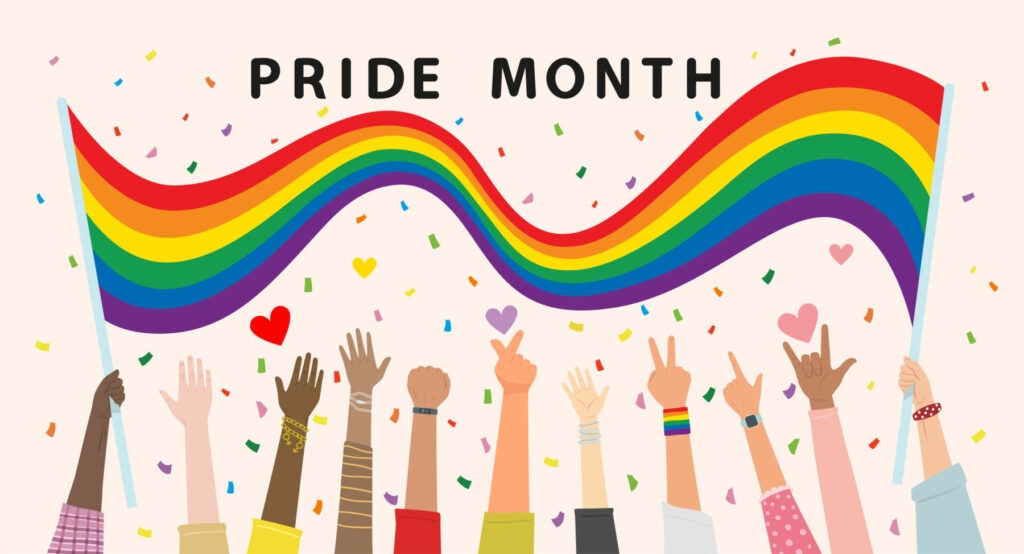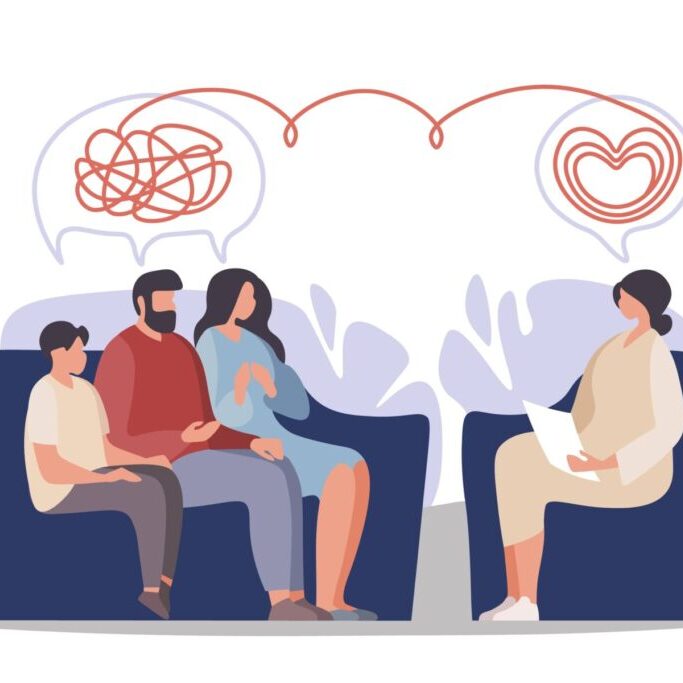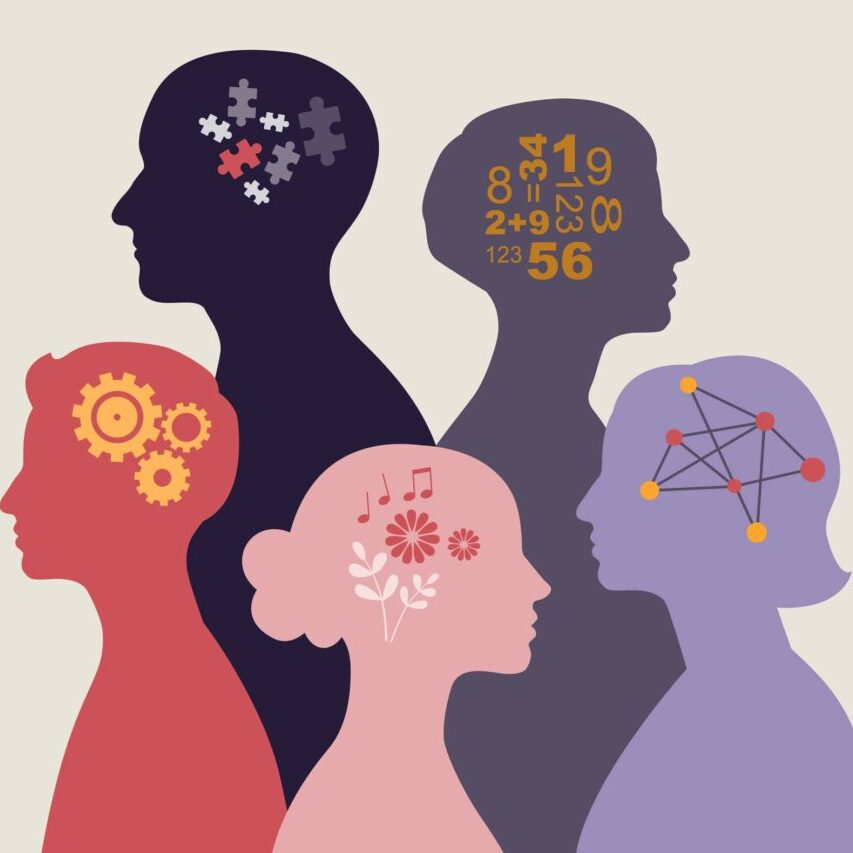Embracing LGBTQ+ Affirming Therapy for Pride

Pride Month, celebrated every June, commemorates the resilience, diversity, and history of queer and LGBTQ+ people. The origins of Pride trace back to the Stonewall Riots of June 1969, a series of spontaneous protests by members of the LGBTQ+ community in response to a police raid at the Stonewall Inn in New York City. These riots are widely regarded as the catalyst for the modern LGBTQ+ rights movement, sparking activism and advocacy that continues to this day.
The significance of June as the month dedicated to Pride extends beyond Stonewall. It was in June 2003, that the U.S. Supreme Court’s decision in Lawrence v. Texas struck down sodomy laws, marking a pivotal moment in the fight for queer rights. Additionally, the founding of the Mattachine Society in June 1950 represented one of the earliest LGBT rights organizations in the United States, advocating for social acceptance and legal protections.
Queer and LGBTQ+ rights and recognition have dynamically evolved since the Stonewall Riots, punctuated by both strides forward and setbacks. Recent years have seen positive legislative advancements, such as the U.S. Supreme Court’s 2020 ruling that protects LGBTQ+ employees from workplace discrimination under the Civil Rights Act. This landmark decision has fortified the rights and dignity of countless LGBTQ+ people in the workplace, providing a vital safeguard against discrimination.
Conversely, queer and LGBTQ+ people continue to confront adverse legislative actions. States across the U.S. have introduced numerous bills targeting transgender youth, with attempts to restrict access to gender-affirming care and participation in sports. These legislative efforts not only endanger the mental and physical health of transgender individuals but also perpetuate a climate of marginalization and stigmatization.
Pride, too, has evolved from a series of protests into a global celebration of visibility, identity, love, and the inherent worth of every person. It serves as a reminder of the ongoing struggle for equality and the importance of self-acceptance. Despite significant progress, the fight for queer liberation is far from complete. Pride marks an opportunity to better understand the causes of and solutions to mental health challenges for LGBT people.
Mental Health Challenges Faced by Queer People
LGBT people face disproportionately high rates of mental health issues compared to their cisgender, heterosexual counterparts. Research consistently highlights these disparities, pointing to a confluence of factors including societal oppression, marginalization, and discrimination. For instance, a 2021 report by the Trevor Project found that 42% of LGBTQ+ youth seriously considered attempting suicide in the past year.
The mental health struggles experienced by queer people are not inherent to who they are, but rather a tragic byproduct of a society that often marginalizes and isolates them. This systemic oppression manifests in various forms, from overt discrimination to subtle microaggressions, all contributing to a hostile environment that exacerbates stress, anxiety, and depression.
Supporting LGBT Mental Health
Supporting mental health among queer people requires a multifaceted approach. LGBT people may consider these strategies to foster resilience and well-being:
- Prioritize Self-Care – Self-care practices such as exercise, self-compassion, mindfulness, and setting boundaries are crucial. Engaging in activities that promote physical health, mental relaxation, and emotional balance can significantly enhance overall well-being.
- Build Community – Creating and maintaining supportive interpersonal relationships is vital. A 2020 study by Meyer et al. found that strong social connections serve as a protective factor against mental illness for LGBTQ+ people. Building a network of friends, family, and allies who affirm one’s identity can provide a sense of belonging and support.
- Cope Effectively – Effective coping strategies are essential for managing challenges that cannot be immediately changed. Techniques such as radical acceptance, mindfulness meditation, seeking support from others (including LGBTQ affirming therapy), and expressive arts therapies can help process experiences and support mental health.
- Celebrate Resilience – Recognizing and celebrating personal resilience can bolster self-esteem and foster a positive self-image. Reflect on past challenges and acknowledge your strength in overcoming them. It can be empowering!
- LGBTQ Affirming Therapy – You don’t have to go it alone. Read on to learn more!
Barriers to LGBTQ+ Mental Health Treatment
Despite significant advancements in LGBT rights, considerable barriers to accessing appropriate mental health care persist for queer people. Historically, LGBTQ+ identities have been pathologized within the mental health field, with terms like “gender dysphoria” being used to describe aspects of the transgender experience.
This medicalization can inadvertently pathologize and stigmatize these identities, deterring individuals from seeking help due to fear of being misunderstood or judged. Additionally, a lack of resources and access to mental health services is a significant barrier.
Economic disparities often limit the ability of LGBTQ+ people to afford therapy, and those living in rural or conservative areas may find fewer providers knowledgeable about and affirming the experiences of queer people.
Moreover, there is a critical shortage of truly queer affirming therapists. Many mental health professionals lack the training or understanding required to provide effective care for LGBT clients, leading to feelings of isolation and frustration with the process and field. Stigma and discrimination further exacerbate these issues, with many queer people avoiding mental health care due to fears of encountering negative biases.
A 2022 study published in the Journal of Adolescent Health found that 55% of LGBTQ+ youth who sought mental health care were unable to access it, underscoring the significant gap between need and availability. Intersectionality is yet another barrier to LGBT mental healthcare, as those who are part of other marginalized groups—such as people of color, individuals with disabilities, or those from low-income backgrounds—face compounded barriers that further limit their access to quality care.
LGBTQ Affirming Therapy
LGBTQ+ affirming therapy is an approach that explicitly recognizes and validates the unique experiences and identities of queer clients. This type of therapy is characterized by several key components that ensure it is both supportive and effective. First, affirming therapists possess cultural competence, being well-versed in the cultural, social, and political contexts that shape queer experiences.
They stay informed about the latest developments in LGBTQ+ rights and issues, ensuring their practice is relevant and supportive. Additionally, this queer affirming therapy rejects the pathologization of LGBTQ+ identities, affirming that being queer or LGBTQ+ is natural and valid. This non-pathologizing approach helps clients feel respected and understood, reducing feelings of shame or self-doubt.
LGBTQ affirming therapy also actively works to create a supportive environment. Queer affirming therapists strive to create a safe and inclusive space where clients can freely explore their identities, express their emotions, and discuss their experiences without fear of judgment. This environment fosters trust and openness, essential for effective therapy.
Moreover, an intersectional approach is integral to affirming therapy. Therapists recognize that LGBTQ+ individuals may face multiple layers of oppression and discrimination, and they address how these intersecting identities impact mental health, providing holistic support.
Finally, queer and LGBTQ affirming therapy emphasizes client-centered care, tailoring the therapeutic process to meet the specific needs of each client. Therapists work collaboratively with clients to set goals, develop coping strategies, and navigate challenges. This personalized approach ensures that therapy is both relevant and effective, empowering clients to improve their mental health and personally grow.
How is LGBTQ Affirming Therapy Unique?
Queer or LGBTQ+ affirming therapy stands out due to its focus on the lived experiences of queer people, which allows for a unique and deeply empathetic therapeutic process. Therapists offering this type of therapy often have personal or professional experiences that enhance their understanding of queer and LGBT issues.
This lived experience enables therapists to connect with clients on a deeper level, fostering a sense of empathy and trust that is crucial for effective therapy. Additionally, affirming therapists take a holistic approach, considering the whole person and acknowledging the various factors that influence mental health, including systemic oppression, family dynamics, and social networks.
Also defining LGBTQ+ affirming therapy is its strong emphasis on empowerment. The goal is to help clients develop self-acceptance, resilience, and self-advocacy skills, enabling them to navigate their lives with confidence and strength.
Moreover, affirming therapists often have robust connections to the queer and LGBT community, providing clients with valuable resources, support networks, and referrals to other affirming professionals. This community connection enhances overall support.
What Steps Can You Take to Engage with a Queer Affirming Therapist?
The National Alliance on Mental Illness (NAMI) provides practical recommendations for finding and engaging with LGBTQ affirming therapists:
- Consider what you’re looking for – Reflect on your therapy goals and what you hope to achieve. Consider whether you want to focus on specific issues such as past trauma, coming out, relationship dynamics, career goals, or something entirely different.
- Gather referrals – Ask for recommendations from friends, support groups, or LGBTQ+ organizations.
- Make the call – Contact therapists you’re interested in working with! Inquire about their services and availability.
- Ensure a good fit – During your initial consultation, ask questions to determine if the therapist is affirming LGBTQ+ identities. You could ask: What is your experience working with queer or LGBTQ+ clients? How do you stay informed about LGBTQ+ issues? What’s different about working with a therapist that specializes in queer mental health? How do you create a safe environment for queer and LGBTQ+ clients?
- Build a relationship – Establish a therapeutic relationship based on trust, respect, and mutual understanding. This relationship is the foundation of effective therapy, enabling you to explore your concerns and work towards your goals in a supportive environment.
By recognizing and validating their experiences, providing a safe and supportive environment, and offering tailored, client-centered care, affirming therapy empowers individuals to navigate their challenges and thrive. This Pride Month, let’s celebrate the progress we’ve made while acknowledging the work that still lies ahead. Embrace LGBTQ+ affirming therapy as a powerful tool for healing and advocacy, ensuring that every person can live authentically and with pride.
We’re here for you!
Engaging in LGBTQ+ affirming therapy at Tandem Psychology can be a transformative experience. Our values and logo, symbolized by a tandem bicycle, embody the belief that you don’t have to navigate your journey alone.
We are committed to riding alongside you, providing support and guidance every step of the way. If you or someone you know could benefit from queer or LGBTQ+ affirming therapy, reach out to Tandem Psychology today. Together, we can foster healing, growth, and resilience.
This blog is made for informational and educational purposes only. It is not medical advice. The information in this blog is not intended to (1) replace a one-on-one relationship with a qualified licensed health care provider, (2) create or establish a provider-patient relationship, or (3) create a duty for us to follow up with you.



